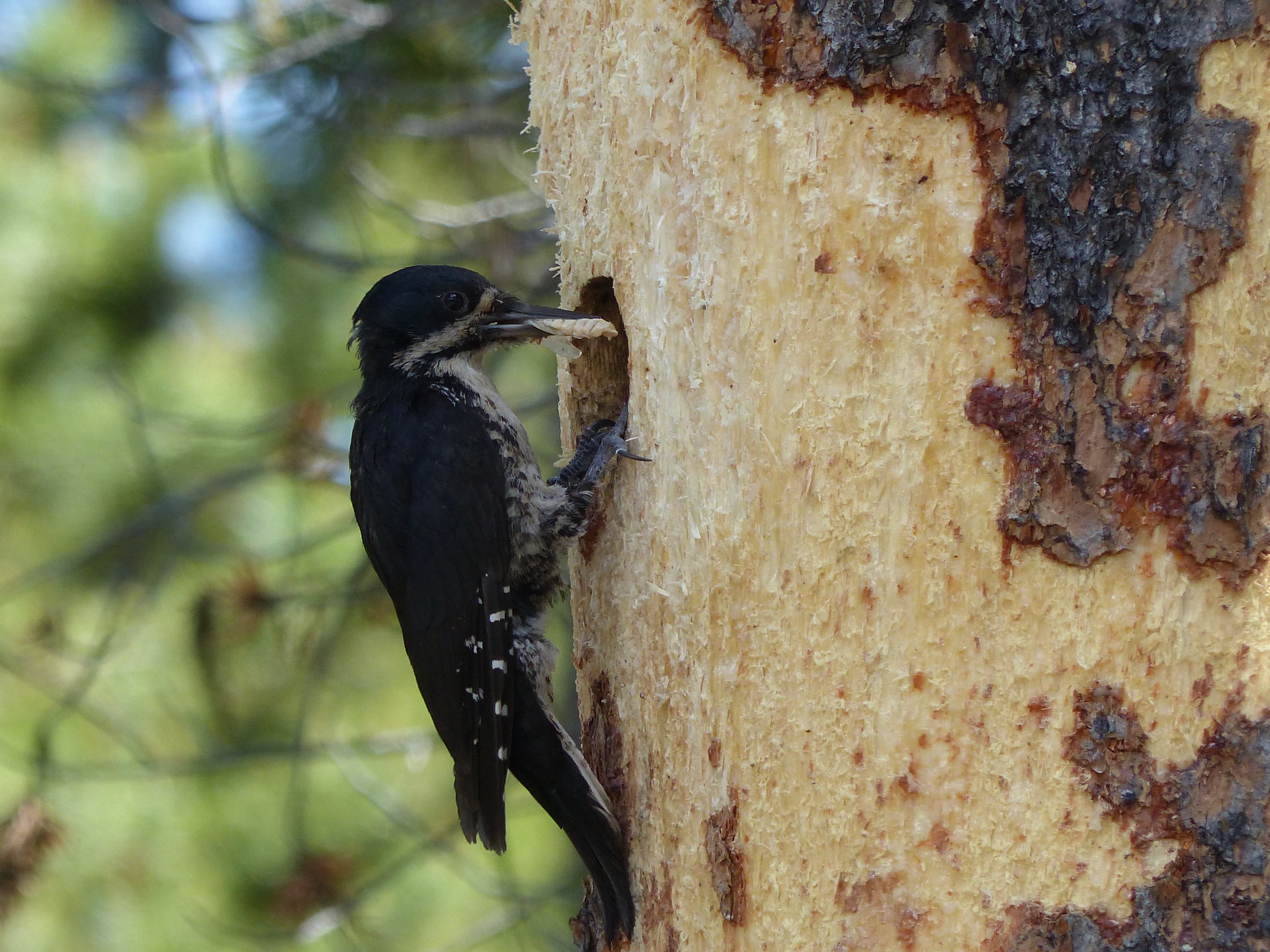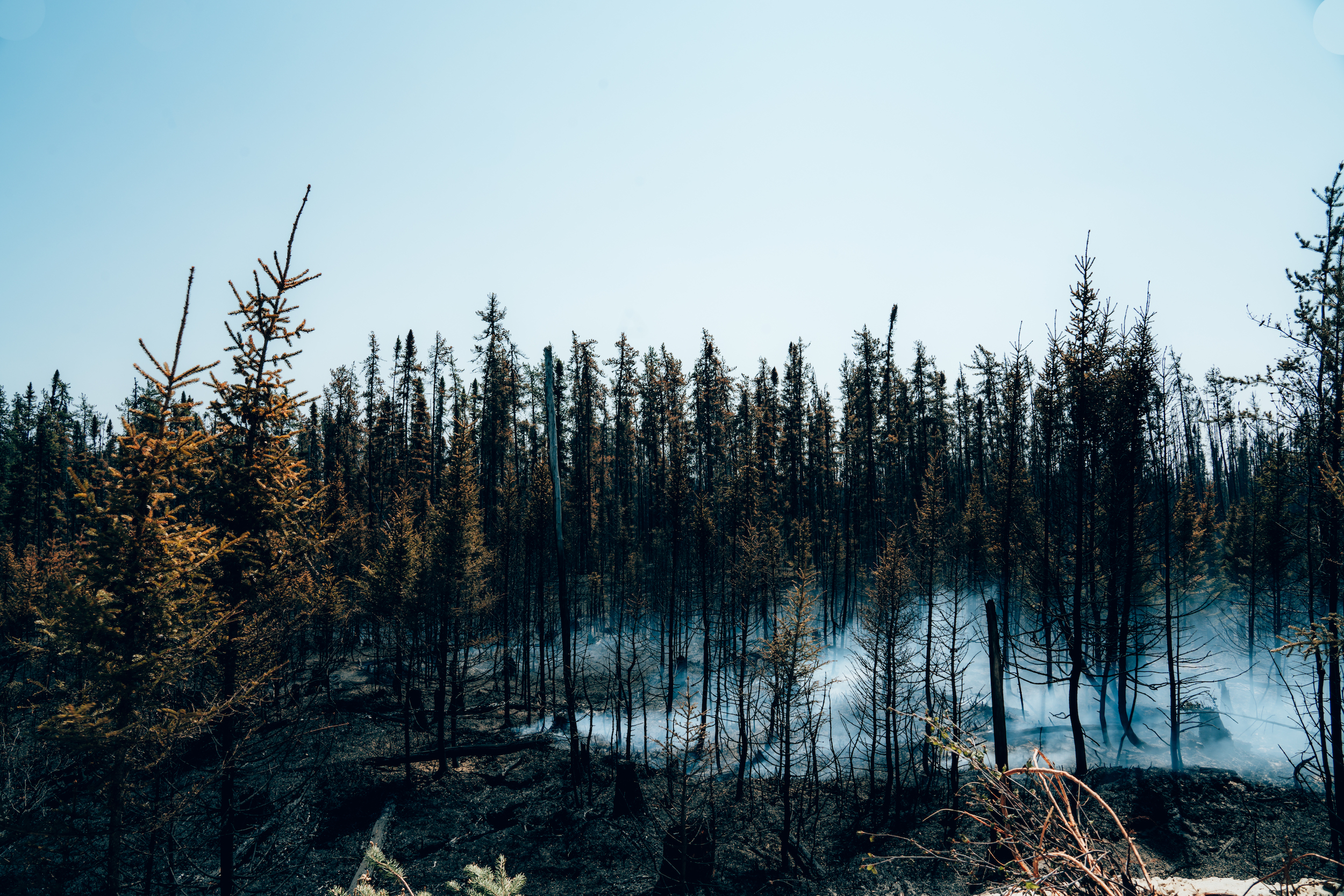
17 government inspectors, 170 companies and more than 9,000 potential infractions: inside B.C.’s oversight of the oil and gas sector
Notes made by regulator officers during thousands of inspections that were marked in compliance with...
In June, wildfire smoke originating in Quebec descended upon the eastern United States, turning skies orange and creating dangerous air quality for millions of people. The smoke has since lightened in most of the United States. But up north, the situation remains dire across Canada’s boreal forests.
Late last week, 498 fires blazed across the country. Tens of thousands of people have evacuated since late April. And less than halfway into wildfire season, a whopping 8.1 million hectares have already burned; on average only around 330,000 hectares typically burn by mid-June. By the end of the month, more hectares had burned than during any other fire season on record.
Fire in nature isn’t necessarily bad. Canada’s boreal forests are built to burn. Tree species like jack pine and lodgepole pine need fire to unlock their cones’ seeds. But this year has the perfect conditions — increased thunderstorm activity, drought in the western boreal forest and a record-setting “heat dome” — for noxious and destructive fires of a different caliber.
This kind of combustible situation is becoming more common as the planet warms. “There’s pretty clear evidence at this point that the frequency and the size of the fires have really gotten a lot bigger,” says avian ecologist Jeff Wells, vice president for boreal conservation at the U.S.-based National Audubon Society. “That’s clearly related to climate change.”
Wildfire seasons, which usually last from May to September, are also starting earlier and ending later. “We’re seeing fires in October,” says Steven Nitah, former Chief of the Łutsël K’é Dene First Nation in the Northwest Territories who now works at the non-profit Nature for Justice. “That’s unheard of.”
The unprecedented size and intensity of these fires disrupt life for people and wildlife, including birds. Recently billions of birds have migrated north from as far as the tip of South America to nest and raise young in Canada’s boreal forest. So, it’s only natural to ask: What is the fires’ impact on avian life there?
To a certain extent, birds are accustomed to wildfire. “These birds have lived alongside fire for a really long time, to the point where fire offers many benefits to birds,” says Andrew Stillman, a conservation ecologist who studies fire impacts on birds at Cornell University in Ithaca, New York. Relatively small and patchy fires help foster a diversity of forest habitats that exist side by side like a mosaic, each habitat home to its own species. Birds like blackburnian warblers thrive in old-growth forests, while white-throated sparrows populate the shrubland that sprouts after a fire. Black-backed woodpeckers prefer to hammer nests into burned trees.
But as fires burn bigger, hotter and more frequently, decimated habitat doesn’t have time to regenerate before burning again, erasing the mosaic of open space, shrubs and century-old trees. Birds that prefer mature forest are pushed out. Even fire-loving birds suffer from intense burning: Stillman has found that young black-backed woodpeckers in the western United States are less likely to survive after giant fires because they have nowhere to hide from predators.

Birds are also at direct risk from raging wildfires, though the risk varies by season. In fall, after any new young have learned to fly, birds can move out of the way, Stillman says. But if fire strikes during nesting season, parents must make difficult decisions. They might stay in a dangerous area if they have nestlings. If they choose to abandon their brood, they will have to fly to an unfamiliar area to try nesting again — which is a risky move, too, when they don’t know where food or predators are. “There’s a lot of things that go into that calculus of moving versus staying,” says Oregon State University ecological physiologist Jamie Cornelius, who studies how birds adapt to unpredictable environmental changes like fire.
If they choose to move, their options are limited by the huge swaths of land that are currently inhabitable. “If a fire encompasses millions of acres, then there are millions of birds impacted,” Wells wrote in an email. Inevitably many birds and nests will succumb to the flames. But boreal birds tend to have wide ranges, so he doesn’t expect these fires to push any species toward extinction. And many species breed later in the season, some starting as late as August, so their nests may not be affected by current fires.
In fact, migrating birds are still arriving up north after long journeys from their wintering sites. As fires burned in Quebec, Wells heard blackpoll warblers and Swainson’s thrushes flying overhead in Maine on their way from South America. “They’re arriving to see the fires and you imagine their response is to try to go somewhere else,” Wells says. Where the birds will go is anyone’s guess.
Beyond the fires lies a more insidious threat: smoke.
“Smoke is a messy soup of toxins,” says Olivia Sanderfoot, an ecologist who studies the impacts of wildfire smoke on birds at University of California, Los Angeles. “Those all have different health impacts.”
The risk that smoke poses to humans, and to birds, depends somewhat on distance. Toxic gases such as carbon monoxide pose a direct risk to firefighters on the front lines. But smoke’s primary hazards are particles smaller than a strand of hair, which can be carried for thousands of miles. Because of their tiny size they can be absorbed directly into people’s bloodstream and, with exposure over time, lead to health problems, including cancer and cardiovascular diseases. Particulate matter, commonly released from fossil fuels, is estimated to be responsible for 4.2 million premature deaths every year.

The extent to which smoke affects birds’ health isn’t as well understood. The health effects may mirror what we see in people, Sanderfoot says — and they certainly manifest more quickly. Bird lungs are not like human lungs: They are rigid, with several balloon-like air sacs facilitating airflow that travels only one way, so that birds take in air on both the inhale and exhale of a breath. This constant flow of fresh air pulls in roughly twice as much oxygen as human lungs, enabling birds to fly in oxygen-poor air at high altitudes. But it also makes them more susceptible to air pollution. Indeed, the idiom “canary in the coal mine” comes from the real-world use of canaries in mines to signal high levels of carbon monoxide because the birds are extra sensitive to poisonous gas.
That’s why in 2020, when Willamette Valley in Oregon filled with smoke from nearby fires, Cornelius worried about the birds. “Everybody disappeared inside,” she says. “And I’m like, ‘Man, the birds are still out there doing whatever they’ve got to do.’” To better understand what was happening to them, last summer she sought out bad smoke conditions in the Oregon woods and sampled blood from juvenile red crossbills living there. She found that the birds’ immune systems were kicked into high gear, presumably to fight inflammation or other damage from the smoke. And the birds were smaller in size than normal for their age — perhaps due to reduced foraging or other behaviour changes in response to smoke.
It’s even harder to study how birds change their behaviour. In 2020 researchers from the U.S. Geological Survey got lucky when four migrating tule geese wearing GPS trackers for an unrelated study encountered a dense plume over Washington. The birds flew in disorganized paths, occasionally climbing to altitudes over 13,000 feet to dodge smoke. Three of the tracked birds took a rest stop in the Pacific Ocean for a few days, as if waiting for the worst to pass. One goose ended up in Idaho, where tule geese had never been observed before. Though a small sample size, the smoggy skies seemed to cause the geese to engage in unusual behaviours.
For a deeper look at how birds respond to smoke, in the fall Cornelius will track American robins to see if birds living in fire-dependent forests behave differently than those that are not adapted to fire. She’s also following smaller birds like chickadees and finches on foot to measure whether birds that hunt insects in the air — exposing them to more smoke — are more affected than ground-foraging birds.
“On a comparative level, what makes a bird more exposed?” she wonders. “And what makes them more or less flexible to be able to change things and reduce their exposure if they are in a smoky area?”
The unknowns outweigh the knowns and experts have a long list of questions to work on now. The answers are growing only more urgent as wildfires become more regular and intense, given the hotter, drier conditions on a warmer planet.
In addition to reducing carbon emissions to address climate change, experts say the best way to help birds is to protect as much remaining habitat as possible. Many areas that have high biodiversity or high carbon storage have been mapped out — for example, within the 10,000 square-mile Thaidene Nëné, an Indigenous protected area in the Northwest Territories. Sites with high ecological value should be prioritized by fire responders in the same way that people and property threats are prioritized during a fire emergency, says Nitah, who was the Łutsël K’é Dene First Nation’s lead negotiator during a new national park’s creation in the area.
Of course, the forest needs some fire. Indigenous people have burned land through a practice called “cultural burning” for generations, shaping the mosaic of the boreal. This sort of fire management could help reduce the intensity of the fires and protect at-risk habitat. It’s going to take both old and new ways of living with fire to help all of us weather the blazes to come.
Get the inside scoop on The Narwhal’s environment and climate reporting by signing up for our free newsletter. On March 17, federal Conservative Leader Pierre Poilievre...
Continue reading
Notes made by regulator officers during thousands of inspections that were marked in compliance with...

Racing against time, dwindling habitat and warming waters, scientists are trying to give this little-known...

From investigative reporting to stunning photography, we’ve been recognized with four 2024 CAJ Awards nods...
